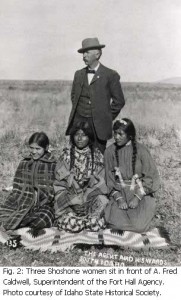The federal government has long provided for inspection in most areas over which it has control, and Indian reservations were no exception. In 1904, the legislature published Laws and Treaties, Vol. I, which outlined laws, policies, and procedures pertaining to its “Indian Affairs” responsibilities.
— There shall be a board of Indian commissioners, composed of not more than ten persons, appointed by the President solely…
— There shall be appointed by the President . . . a sufficient number of Indian inspectors, not exceeding five in number*

These Cards Allowed Members of the Board of Indian Commissioners to Use Telegraph Services at the Government Rate
— Each Indian superintendency and agency shall be visited and examined [as often as twice a year by one or more of the inspectors.] Such examinations shall extend to a full investigation of all matters pertaining to the business of the superintendency or agency . . .
Such an undertaking for inspectors was enormous, considering the number of reservations and other agencies involved, and the great distances inspectors had to travel. And, just what were they to inspect?

Three Shoshone Women and A. Fred Caldwell, Superintendent of the Fort Hall Agency, courtesy Idaho State Historical Society
“An examination of accounts, the manner of expending money, the number of Indians provided for, contracts of all kinds connected with the business, the condition of the Indians, their advancement in civilizations, the extent of the reservations, and what use is made of the lands set apart for that purpose, and generally, all matters pertaining to the Indian service.”
Inspectors had a lot of power and could suspend superintendents on the spot and appoint a temporary person to replace him, examine all employees (as well as the superintendent) under oath, etc. However, it was a mighty job for just five people–the intent of the law may have been admirable, but the proper execution of it seems impossible.
*italics are mine






